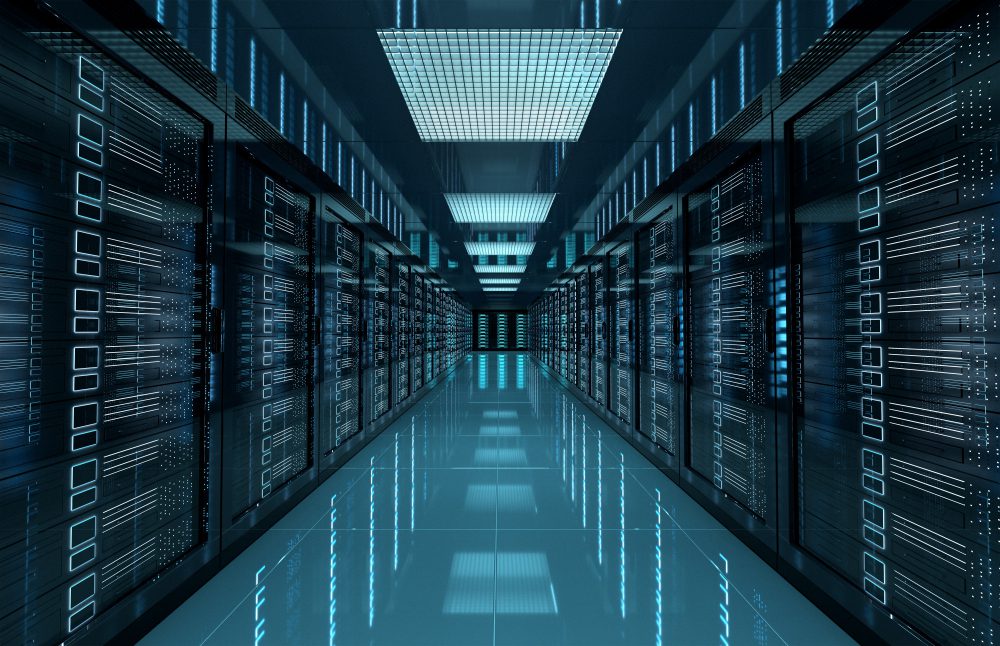How to Configure a NAS Server?
Introduction
Configuring a Network Attached Storage (NAS) server is a crucial step in setting up a reliable and efficient data storage system. NAS servers offer a convenient way to store and access files over a network, making them an ideal choice for both personal and business use. In this article, we will guide you through the process of configuring a NAS server, from hardware setup to software configuration, ensuring that you can make the most out of your storage solution.
Hardware Setup
Before diving into the software configuration, it is essential to set up the NAS server hardware correctly. This involves connecting the necessary cables, installing hard drives or SSDs, and ensuring proper power supply. Refer to the manufacturer’s instructions for detailed guidance on how to assemble and connect the hardware components.
Choosing the Right NAS Software
Once the hardware setup is complete, it’s time to choose the appropriate NAS software. There are numerous options available, each with its own set of features and user interface. Some popular choices include FreeNAS, Synology DiskStation Manager, and QNAP QTS. Research different options and select the one that aligns with your needs and preferences.
Initial Configuration
After installing the chosen NAS software, you will need to perform some initial configuration. This typically involves accessing the NAS server’s web-based interface through a browser. Consult the user manual or online documentation for specific instructions on how to access the interface. During the initial configuration, you will be prompted to set up basic settings such as network configuration, user accounts, and access permissions.
Storage Configuration
The primary purpose of a NAS server is to provide centralized storage for your files. To utilize the available storage capacity efficiently, you will need to configure the storage settings. This includes creating storage pools, volumes, and shared folders. Depending on the NAS software you are using, these settings might be located in different sections of the interface. Consult the software’s documentation for guidance on configuring storage.
Data Backup and Redundancy
One of the key advantages of a NAS server is its ability to provide data redundancy and backup solutions. It is crucial to configure appropriate backup mechanisms to ensure the safety of your data. Most NAS software offers features such as RAID (Redundant Array of Independent Disks) configurations, which help protect against drive failures. Additionally, you can set up regular backups to external drives, cloud storage services, or another NAS server.
Accessing Files Remotely
A significant advantage of a NAS server is the ability to access files remotely. To enable remote access, you will need to configure network settings, port forwarding, and possibly set up a virtual private network (VPN) for secure access. Each NAS software has its own method for enabling remote file access, so refer to the documentation for detailed instructions.
What are NAS Server Settings?
Introduction
A Network Attached Storage (NAS) server is a device that enables you to store and access data over a network. To set up and configure your NAS server, you need to adjust certain settings. These settings allow you to customize your NAS server to meet your specific needs and ensure optimal performance and security.
Network Settings
The network settings of your NAS server determine how it connects to your network. You will typically need to configure the IP address, subnet mask, gateway, and DNS server settings. These settings enable your NAS server to communicate with other devices on the network. It’s essential to ensure that these settings are correctly configured to avoid connectivity issues.
User and Authorization Settings
The user and authorization settings of your NAS server control who can access the data stored on it. These settings include creating user accounts, assigning permissions or privileges, and managing authentication methods such as username/password or LDAP integration. By properly configuring these settings, you can ensure that only authorized users can access and modify the files on the NAS server.
File Service Settings
The file service settings of your NAS server determine the protocols and options used to share files over the network. You can choose between different file sharing protocols such as SMB/CIFS (Windows File Sharing), NFS (Network File System), or FTP (File Transfer Protocol). Additionally, you can customize settings like file permissions, access restrictions, and file locking mechanisms to enhance security and control access to shared files.
Data Protection Settings
Data protection settings are crucial to ensure the safety and integrity of your data stored on the NAS server. These settings include configuring options like RAID (Redundant Array of Independent Disks) levels, snapshot schedules, replication, and backup solutions. By implementing robust data protection settings, you can minimize the risk of data loss due to hardware failures or other unforeseen events.
How to Set Up a NAS Server at Home?
What is a NAS Server?
A Network Attached Storage (NAS) server is a device that allows you to store and share data over a network. It provides centralized storage for files, media, and backups, making it an ideal solution for homes and small businesses.
Choosing the Right NAS Server
Before setting up a NAS server, you need to choose the right device that suits your needs. Consider factors such as storage capacity, number of drive bays, processor speed, and connectivity options. Popular NAS brands include Synology, QNAP, and Western Digital.
Setting Up the NAS Server
- Connect the NAS: Start by connecting the NAS server to your home network. Use an Ethernet cable to connect the NAS to your router or switch.
- Power On: Plug in the power adapter of the NAS server and turn it on.
- Access the NAS: Once the NAS has booted up, you can access its interface through a web browser. Enter the IP address of the NAS into the browser’s address bar.
- Create User Accounts: Set up user accounts and passwords to control access to the NAS server. This ensures only authorized users can access the shared files.
- Configure Storage: Set up the storage configuration by creating volumes, RAID arrays, or shared folders. This allows you to organize and manage your data effectively.
- Enable Network Services: Enable network services like file sharing protocols (SMB, NFS), media streaming, and cloud synchronization. These services enhance the functionality of your NAS server.
Benefits of a NAS Server
A NAS server offers several benefits, including:
- Centralized Storage: All your files and media are stored in one location, making it easy to access and share them across devices.
- Data Redundancy: By setting up RAID arrays, you can protect your data against drive failures. If one drive fails, you can easily recover your data from the redundant drives.
- Remote Access: Many NAS servers allow remote access, enabling you to access your files from anywhere with an internet connection.
- Data Backup: You can set up automatic backups of your important files to the NAS server, ensuring your data is safe and secure.
“Setting up a NAS server at home provides a reliable and convenient way to store and access your data. It offers flexibility, security, and peace of mind.”
With the right NAS server and proper setup, you can create your own personal cloud storage that meets your specific needs. Whether you want to store important files, stream media, or back up data, a NAS server is an excellent solution.
What is NAS Server Architecture?
NAS, which stands for Network Attached Storage, is a type of storage device that allows multiple users and computers to access and share data over a network. NAS server architecture refers to the design and components that make up a NAS system.
Components of NAS Server Architecture
The key components of NAS server architecture include:
- NAS Devices: These are the physical storage devices that house the data. They typically consist of one or more hard disk drives or solid-state drives.
- Operating System: NAS devices have their own operating system, specifically designed for data storage and sharing. The OS handles tasks such as file management, user access control, and network connectivity.
- Network Interface: NAS systems rely on network interfaces to connect with other devices. They usually have Ethernet ports to facilitate communication over local area networks (LAN) or the internet.
- File-Level Protocols: NAS architectures use file-level protocols like NFS (Network File System) or SMB (Server Message Block) to allow clients to access and manipulate files stored on the NAS devices.
- Data Redundancy Mechanisms: To ensure data integrity and availability, NAS server architectures often incorporate redundancy mechanisms such as RAID (Redundant Array of Independent Disks), which combines multiple disks into a single logical unit.
Benefits of NAS Server Architecture
NAS server architecture offers several advantages over traditional storage solutions:
- Centralized Storage: NAS systems provide a centralized storage location accessible by multiple users and devices, making it easier to manage and share data.
- Scalability: NAS architectures can be easily expanded by adding additional drives or connecting multiple NAS devices to accommodate growing storage needs.
- Flexibility: NAS devices support various operating systems and platforms, allowing seamless integration into existing IT infrastructures.
- Remote Access: With NAS, users can access their files remotely over the internet, enabling remote work and file sharing.
In NAS server architecture, the focus is on creating a reliable and efficient storage solution that can cater to the needs of small businesses, home networks, and even large enterprises.
Overall, NAS server architecture provides a cost-effective and user-friendly solution for data storage and sharing needs. Whether you need to backup important files, create a media server, or establish a collaborative environment, a NAS system can offer the reliability and convenience you require.
How to Secure My NAS Server?
Introduction
Network-Attached Storage (NAS) servers are a popular choice for individuals and businesses for storing and managing data. However, it is crucial to implement proper security measures to protect the sensitive information stored on these servers. Here are some essential steps to secure your NAS server:
1. Change Default Login Credentials
As with any device, one of the first steps in securing your NAS server is to change the default login credentials. Attackers often exploit default usernames and passwords to gain unauthorized access. Create a strong and unique password, combining uppercase and lowercase letters, numbers, and special characters.
2. Implement Two-Factor Authentication
Adding an extra layer of security by enabling two-factor authentication (2FA) can significantly enhance the protection of your NAS server. With 2FA, users must provide a secondary authentication method, such as a fingerprint or a one-time password, in addition to their login credentials.
3. Regularly Update Firmware and Software
Keeping your NAS server’s firmware and software up to date is vital to ensuring security. Manufacturers frequently release updates that address vulnerabilities and patch security loopholes. Regularly check for updates and apply them promptly to protect against potential threats.
4. Enable Firewall and Intrusion Detection System
A robust firewall is essential to prevent unauthorized access to your NAS server. It acts as a barrier between your server and external threats, filtering incoming and outgoing network traffic. Additionally, consider setting up an intrusion detection system (IDS) to monitor and detect potential attacks in real-time.
5. Restrict Network Access
Limiting network access to your NAS server is an effective way to enhance security. Configure access control lists (ACLs) and restrict access only to authorized IP addresses or subnets. Additionally, consider setting up virtual private network (VPN) access for remote connections, ensuring secure communication.
6. Regularly Backup Data
Regularly backing up your data is essential in case of any security breaches or hardware failures. Create a backup schedule and store backups in secure locations, ideally off-site or in the cloud. This ensures that even if your NAS server gets compromised, you can recover your data without significant loss.
What are Common NAS Server Issues?
1. Slow Performance
Slow performance is one of the most common issues encountered with NAS servers. This can be caused by a variety of factors including inadequate hardware specifications, network congestion, or inefficient configuration settings. To resolve this issue, it may be necessary to upgrade the hardware, optimize network settings, or fine-tune the NAS server’s configuration.
2. Connectivity Problems
Connectivity problems can arise when accessing the NAS server over the network, either locally or remotely. These issues can stem from incorrect network configurations, firewall settings, or connectivity disruptions. Troubleshooting steps may include checking network settings, ensuring proper firewall rules, and verifying network connections.
3. Data Corruption
Data corruption can occur due to power outages, faulty hard drives, or improper shutdowns. This can lead to the loss of important data stored on the NAS server. Implementing a proper backup strategy and regularly checking hard drives for errors can help mitigate the risk of data corruption.
4. Hardware Failures
Hardware failures are another common issue with NAS servers. This can include malfunctioning hard drives, power supply failures, or faulty network interfaces. Regular monitoring of hardware health, as well as having spare hardware components available, can help minimize downtime in case of hardware failures.
5. Insufficient Storage Capacity
Running out of storage capacity is a common problem faced by users of NAS servers. This can happen due to rapidly growing data volumes or inadequate initial storage planning. Adding additional hard drives or upgrading to a higher-capacity NAS server can help address this issue.
6. Security Vulnerabilities
Security vulnerabilities can expose the NAS server to unauthorized access, data breaches, or other malicious activities. It is important to regularly update the NAS server’s firmware, apply security patches, and implement proper access controls to mitigate the risk of security vulnerabilities.
Proper maintenance and proactive monitoring are essential for preventing and addressing common NAS server issues.
Conclusion
Configuring the NAS server settings is essential to maximize its functionality and security. By adjusting network, user and authorization, file service, and data protection settings, you can tailor your NAS server to meet your specific requirements. Remember to regularly review and update these settings to ensure your NAS server operates smoothly and securely over time.
In an era of increasing cyber threats, securing your NAS server is crucial to protect your valuable data. By following these essential steps, such as changing default login credentials, enabling two-factor authentication, updating firmware and software, and implementing firewall and intrusion detection systems, you can significantly improve the security of your NAS server.



